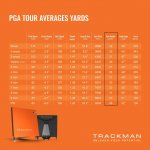fundy
Ryder Cup Winner
Can you name any set of clubs that are in the GI or SGI category that have traditional lofts? I've looked and can't find any??
And I'm sorry, but you're wrong about the ball flight because that is exactly why the manufacturers have moved weight to the bottom of the club. Modern seven irons are designed to fly at the same peak height as traditional seven irons, despite having the loft of an old six iron. It is the peak height that the manufacturers use to 'define' a club as a particular iron - 7, 6, 5 etc.
depend what you call traditional lofts, not sure there are actually any clubs these days that have lofts of clubs from 50 years ago
The Orka CTI are probably as close as you will get in a GI iron with the PW at 46 and 4 degree gaps down from there (2 degrees less than their MBs for eg)

